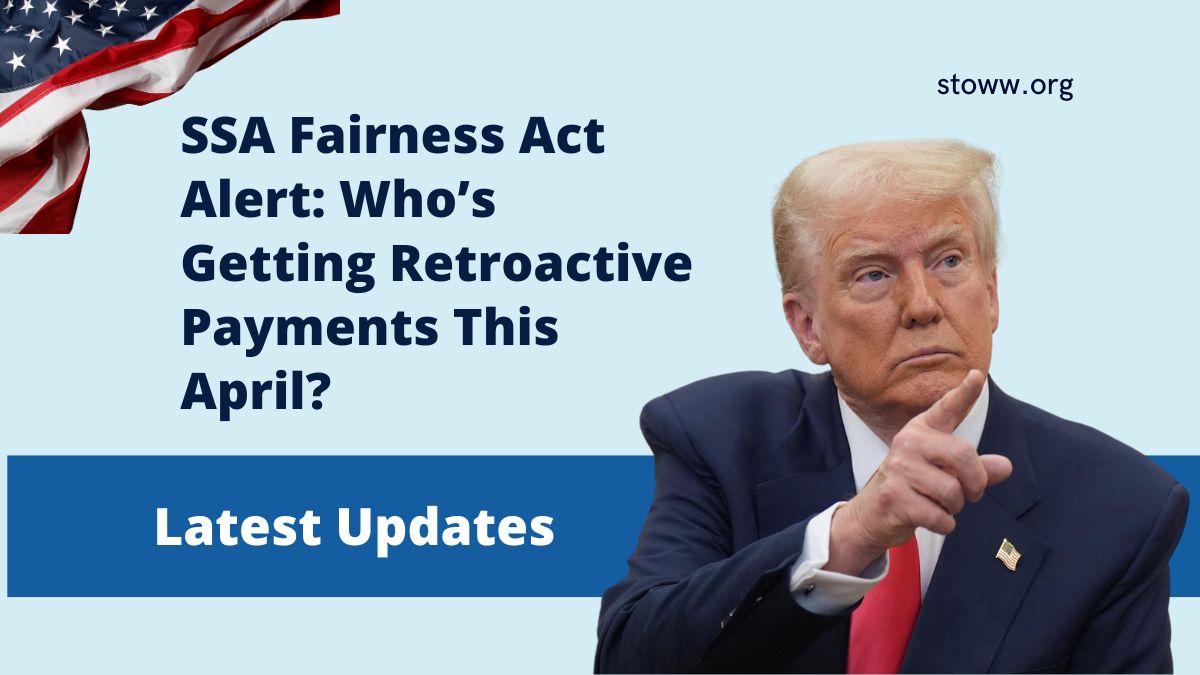Millions of Americans are set to benefit from recent changes due to the Social Security Fairness Act, which addresses longstanding reductions under the Windfall Elimination Provision (WEP) and the Government Pension Offset (GPO).
Starting this April, many individuals previously impacted will receive significant retroactive payments. Here’s everything you need to know about these payments and eligibility.
Understanding the SSA Fairness Act
The Social Security Fairness Act, enacted in January 2025, repealed two controversial Social Security provisions:
- Windfall Elimination Provision (WEP): Previously reduced Social Security benefits for individuals who earned pensions through jobs not covered by Social Security.
- Government Pension Offset (GPO): Previously reduced survivor or spousal Social Security benefits for people who received government pensions.
The repeal aims to ensure fairer treatment of beneficiaries who worked in public sectors such as education, public safety, and federal services.
Who Will Benefit from the Retroactive Payments?
Beneficiaries likely to receive these retroactive payments include:
- Teachers and Educators who worked in state retirement systems outside the Social Security framework.
- Public Sector Employees like police officers, firefighters, and civil servants affected by WEP and GPO.
- Federal Employees under the Civil Service Retirement System (CSRS).
These individuals will receive back payments due to adjustments resulting from the repeal of WEP and GPO.
Details of Retroactive Payments
Eligible beneficiaries will receive retroactive payments covering adjustments from January 2024 to February 2025. Here is a summary:
| Retroactive Payment Details | Information |
|---|---|
| Average Retroactive Amount | Approximately $6,710 |
| Retroactive Period Covered | January 2024 – February 2025 |
| Distribution Timeline | Completed by end of March 2025 |
| Monthly Benefit Increase | Average increase of around $360 |
Beneficiaries have already begun seeing these payments, with most distributions completed by the end of March 2025.
Increased Monthly Benefits from April 2025
Alongside retroactive payments, monthly Social Security checks for affected individuals will increase significantly starting April 2025. This increase varies depending on individual earnings histories and previously received pension amounts but averages around $360 per month.
How to Verify Your Eligibility
To determine if you are eligible:
- Check Your Work History: Confirm if you previously worked in a position not covered by Social Security but eligible for a pension.
- Review Social Security Statements: Look for notes regarding reductions due to WEP or GPO.
- Contact the SSA: Reach out directly to confirm your eligibility and the specifics of your retroactive payments and monthly benefit adjustments.
Steps Beneficiaries Should Take
To ensure you receive all payments smoothly:
- Update Personal Information: Ensure the SSA has your correct mailing address and banking details.
- Monitor Your Bank Account: Watch for deposits clearly labeled from the SSA.
- Contact SSA if Needed: If payments seem delayed, contact the SSA promptly for clarification.
The SSA Fairness Act significantly enhances the financial stability of retirees and public sector workers previously disadvantaged by the WEP and GPO provisions.
Retroactive payments and increased monthly benefits starting this April represent a crucial step toward fair treatment for affected individuals. Staying informed and proactive ensures beneficiaries maximize their benefits.
FAQs
When should I expect to receive my retroactive payment?
Most eligible recipients should have received payments by the end of March 2025. If you haven’t received yours, contact the SSA immediately.
How much will my monthly benefit increase from April 2025?
Monthly increases average around $360, depending on individual employment and pension circumstances.
Is any action required on my part to receive these payments?
Typically, no action is required. Payments are automatically processed, though ensuring your information is current with SSA can prevent potential issues.



